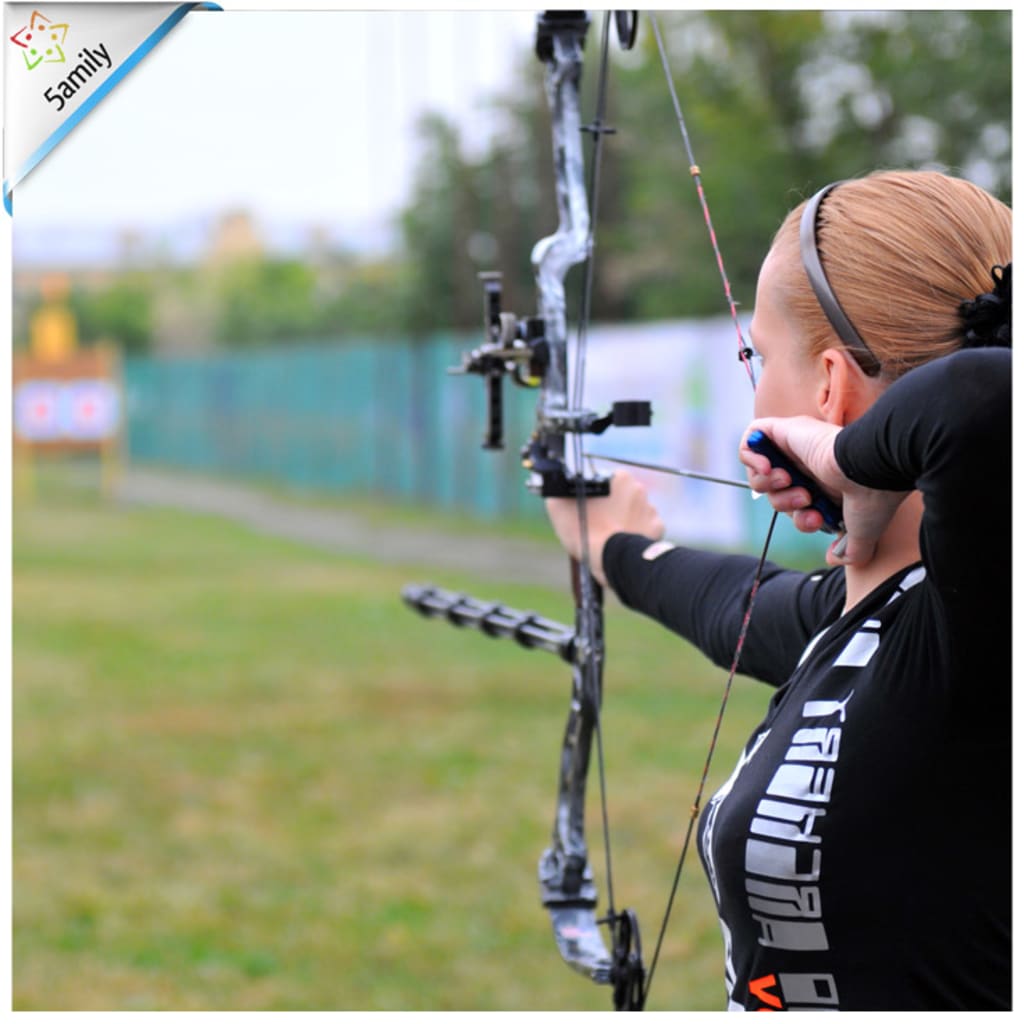ARCHERY FOREVER
Archery Form: Compound Bow Shooting Techniques

To maintain good archery form during the whole year, your physical strength and conditioning, archery gear, and your archery technique are things you'll need to consider. Setting aside some time each week dedicated to each of these areas, can help you be prepared the next time you need to nock an arrow once hunting season comes around. This is vital for a range of reasons. Firstly, your body will be more enduring, should the need arise to stay longer in the forest or drag an animal out of it. You'll also gain more confidence in your shooting skills, which will help you make a spot-on shot even in imperfect conditions. These tips and techniques to shooting a compound bow will not only aid you in any standard hunt in the woods behind your house, but will also prepare you for a trip to a new place. Even if this isn't on your calendar, being willing and able will do no harm.
So what is a compound bow? Modern compound bows are widely seen as the fastest, most powerful and most accurate bows ever manufactured. To put simply, this is a bow that utilises a levering system to draw limbs and make a shot. Consequently, it consists of pulleys and cables, which is a feature that recurve arrows don't have. Compound bows, due to heightened accuracy among other things, are a popular go-to when it comes to hunting and target shooting. Regardless of this, even though compound bows have a more sophisticated system when compared to other traditional bows such as recurve bows and long bows, it is farfetched to simply pick up a compound bow, load an arrow, pull the string, and expect to get the shot right. Shooting a bow accurately is a fine art, and it's something that will require a great deal of practice, dedication and motivation. If you put in these, finesse, precision and accuracy will naturally follow. In other words, the only thing that will attain proficiency is putting in time and effort to perfect your technique. But to help you get started, keep reading to get some helpful tips that are critical before shooting a compound bow, if you want to get it right.
The difference between traditional and compound bows
All bows utilise the mechanical advantage of leverage, whereby energy is stored in flexed limbs as you draw them. This is how bows have the ability to shoot an arrow faster than it is humanly possible to throw one.
Traditional bows such as recurve bows, longbows or others, store this energy directly. The further they are drawn, the harder they become to pull and hence, the more energy is transferred into the arrow when you release it. The greater effort that is needed to draw a traditional bow, the faster it will shoot the arrow. Therefore, when you draw a traditional bow all the way to your ear, you'll be lifting the entire draw weight. This means if your bow draws 60 lbs., you're holding 60 lbs. in your hands. This is difficult, to say the least.
However in the case of a compound bow, it has big wheels on its ends which are cams and their profile is designed in a way that creates a "let off" at the end of the draw. Usually, this can be anywhere between 60 and 80 per cent of the total draw weight. So a compound bow might have a 70 per cent let off, which means that with 60 lbs. of draw weight, the archer only has to hold 18 lbs. of weight. The considerably lighter weight allows for the bow to be drawn for a longer period of time - time which can be utilised to take more precise aim. Less effort also means the bow is held more steadily, which would increase accuracy even more.
Compound bows, in comparison to traditional or recurve bows, allow for greater accuracy and power for a longer distance. This means associated skills, such as stealth and concealment, become less vital. A compound bow can also be customised to a greater extent compared to a conventional bow. Additionally, compound bows can hold a range of tools, such as stabilisers and scopes.
Traditional bows lack the sophistication of compound bows and don't have wheels, pulleys and other mechanisms - instead they depend solely on one's core strength. Despite being lighter in weight, they demand more strength to draw, making upper body a necessity in traditional bows. This is not the case with compound bows. Compound bows also do not require being at close proximity with the target, whereas recurve bows do demand a close distance, involving a great amount of technique and talent that is gained through extensive practice and experience. Compound bows, on the other hand, do most of the work for you.
The top 5 compound bow tips for beginners
Relaxing the Entire Body from Head to Toe
It is vital that your whole body is entirely relaxed before you shoot the compound bow. Focus on relaxing each part of your body, from your feet, legs, hip and hands to your arms, wrists, torso and head. This is a step that amateurs, in their eagerness to shoot, may forget to practise.
Inhale and exhale repeatedly to relax your body. Once this is done, you may bend your bow arm until your elbow is unlocked. Let your fingers hang, all the while keeping yourself relaxed.
Using the Two Finger Technique
It is helpful to use just two fingers when holding and shooting the bowstring.
When loading the bow, it may not make much of a difference if you use more than one finger, particularly when you draw back the string. However when shooting, it's better to release all other fingers except two, holding the arrow. Then when making the shot, release both fingers at the same time.
Shooting Within 7 Seconds
As a rule of thumb, try shooting the arrow within 7 seconds of drawing back the string.
Why seven seconds, you might ask? The reason is that seven seconds is the average length of time you have before getting distracted by something else in your surroundings. Hence, to increase not just accuracy but also safety when making the shot, it's desirable to aim to shoot within seven seconds.
Anchoring
Anchoring refers to the position your draw hand takes when you pull back the bowstring. Just like snowflakes, leaves and drops of water, no two archers are the same; each has their unique anchor.
This means that there are a myriad of types of anchor. Archers may choose to place their draw hand on their cheek or near jaw, but in any way chosen, the anchor point will have to rest on the face in the same spot for each shot. It is for this reason that practice makes perfect. Thus, during the training phase to perfect archer skills, make sure to adopt the same position repeatedly. This might be irritating but is a necessary skill to attain.
In order to reach your anchor point, you must first take your stance, then nock the arrow and begin to pull back. This might take several shots to get used to, but don't worry, that's completely normal. Constant practice and dedication are sure to produce favorable results.
Letting the Release Surprise You
One of the greatest mistakes that compound bow rookies make is trying to time their shots. When releasing the arrow, you want it to take you by 'surprise' rather than attempting to be deliberate.
Of course, this does not mean pulling the string back and releasing the arrow while giving absolutely no thought to the process.
But you do want it to surprise you to an extent, much like shooting a gun. To make it clearer, this means that you shouldn't have a command or deadline of some sort in your head telling you that you'll shoot at precisely 4 seconds.
In fact, timing your shot is an almost sure-fire way of firing inaccurately. Instead, simply allow your fingers to slip when you're ready to shoot and release the bow.
Read more about archery
About the Creator
Dandelionclub
Writer, Hobbyist, Traveller, Art Lover





Comments
There are no comments for this story
Be the first to respond and start the conversation.